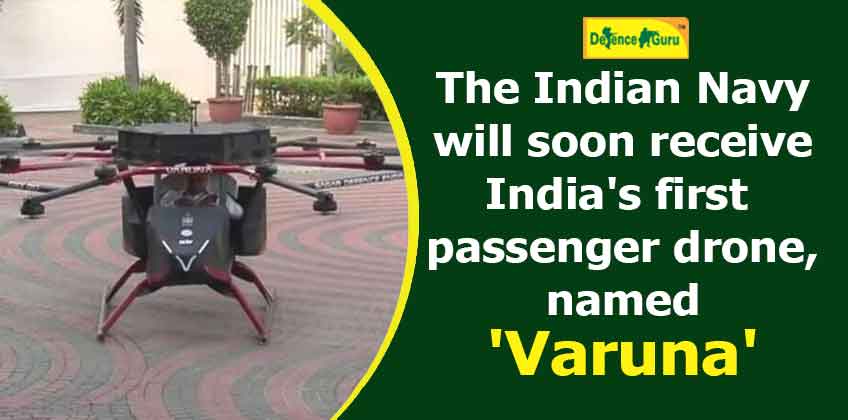The Indian Navy will soon receive India's first passenger drone, named 'Varuna'
In a major breakthrough, the Indian Navy will soon receive the country's first passenger-carrying drone, the "Varuna," developed by Pune-based Sagar Defence Engineering Private Limited. A presentation of this specific flying vehicle, powerful enough to carry a passenger, was shown at this year's Naval Innovation and Indigenisation Seminar's summit in July. The drone, which was created through collaborative efforts with the Navy, can land and take off from moving naval vessels.
According to news reports, the "Varuna" drone can carry a load of 130 kg and has a range of 25 to 30 kilometers. The incorporation of such a drone will also facilitate the Indian Navy in strengthening existing monitoring and compliance.
Furthermore, at the Bharat Drone Mahotsav 2022, India's largest drone festival, Prime Minister Shri Narendra Modi highlighted the importance of drone technology. He mentioned that the advancement of drone technology is yet another means of furthering our commitment to excellent governance. Readers should also be aware that India now has its first drone school, which is dedicated exclusively to interpreting this advanced drone technology. Gwalior gained this new institute on March 10, 2022, ushering in a new period in the world of drone schooling.
Key Features of India's 1st passenger drone ‘Varuna’
-
According to news stories, the 'Varuna' was manufactured and designed by Chakan-based Sagar Defence Engineering Private Limited. As claimed by the makers, this drone can move commodities such as liquids, machinery, and humans using a standard cargo attachment.
-
According to the founder of Sagar Defence Engineering, this framework can also pick up 100 kg of cargo and conduct medical rescue operations. It has a range of 25–30 km and can fly for about 30 minutes. In the event of a mechanical fault, it has a ballistic parachute that can be deployed.
-
The primary objective of this drone is to develop indigenous technology that can be fostered and implemented to safeguard frontline warriors on battlegrounds while also enhancing national vigilance and reliability.
-
Varuna, due to its ability to perform autonomous take-off and landing even while the navy vessels are moving, can be used for inter-ship component and staff movement.
-
Other potential advantages of the passenger drone include casualty rescue operations in the event of a road accident, use as an air ambulance in isolated regions, emergency evacuations, relief efforts, and so on.
As the world's security requirements sprout, India appears competent to meet them, both in terms of reliability and cost-effectiveness, as Indian defence industries continue to flourish. The Indian defence network is expanding as military exports have increased dramatically in the last four years. The Indian Air Force (IAF) recently received its first batch of made-in-India light combat helicopters produced by Hindustan Aeronautics Limited (HAL). India has implemented several progressive policies in recent years to augment its indigenous layout, advancement, and production of armaments through coordinated projects.

















